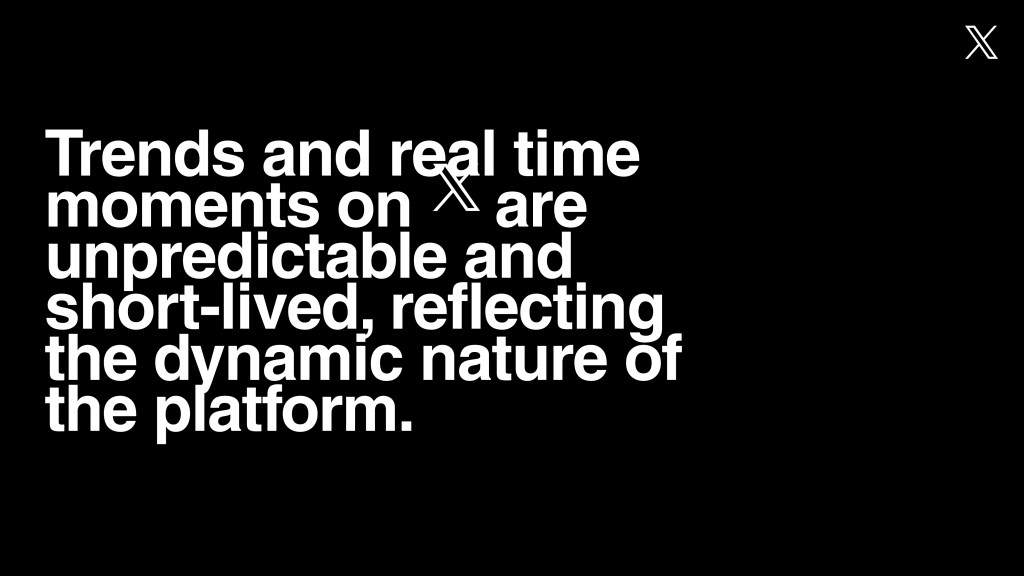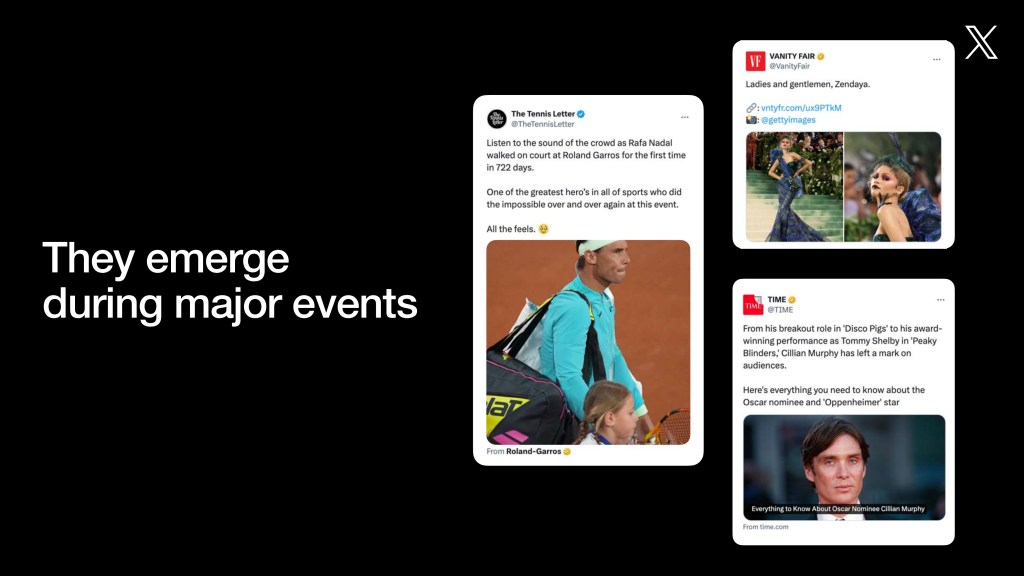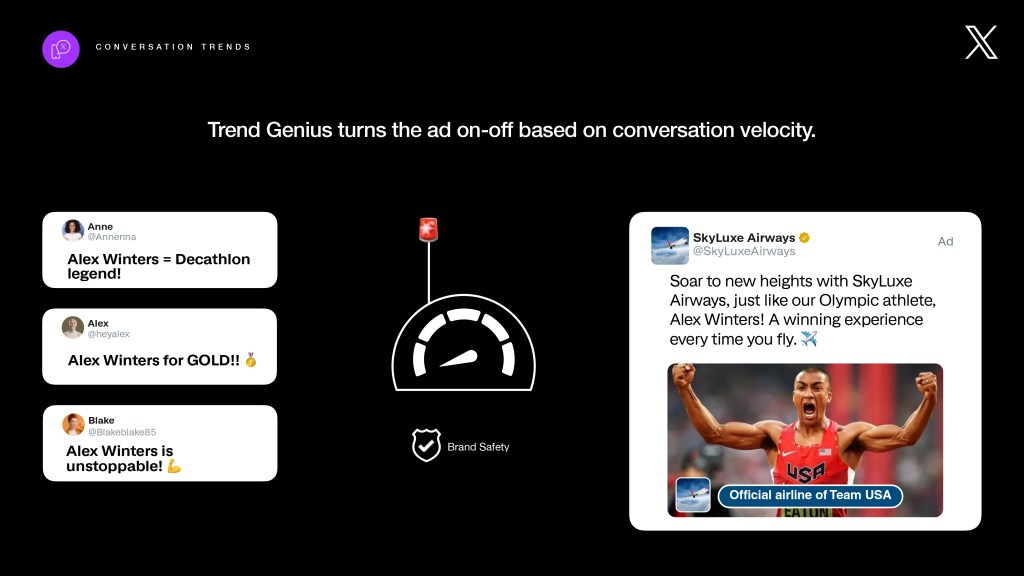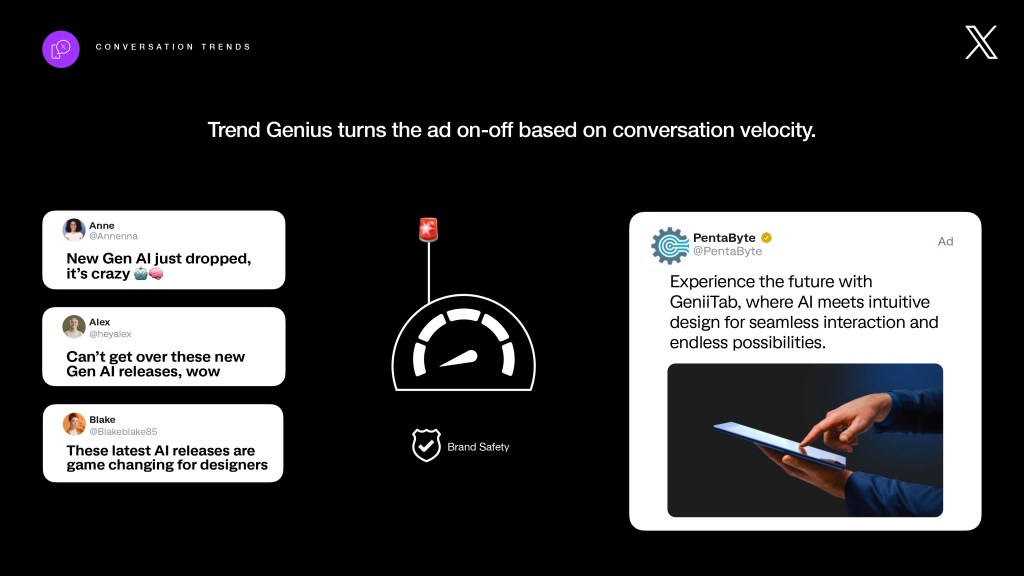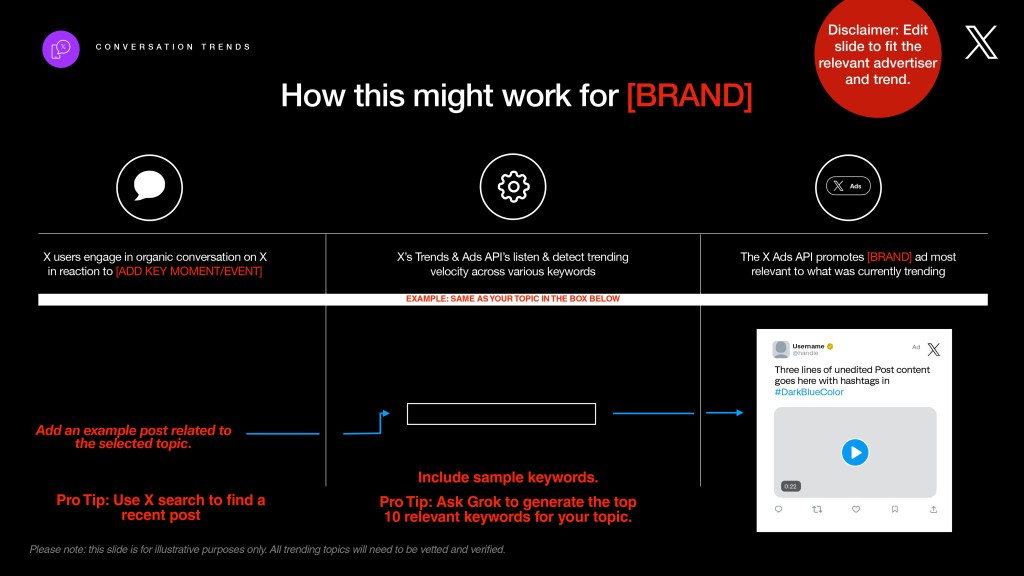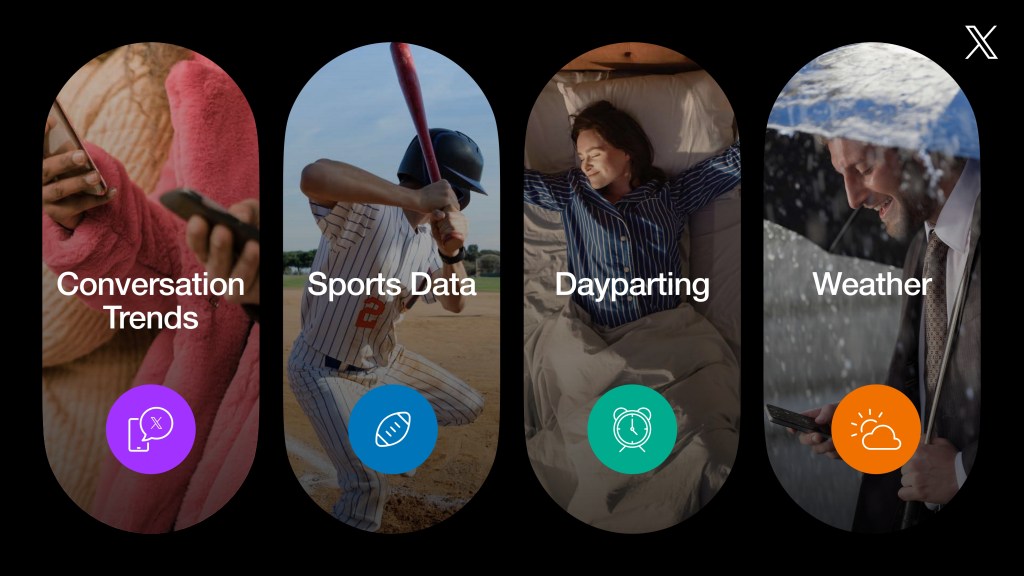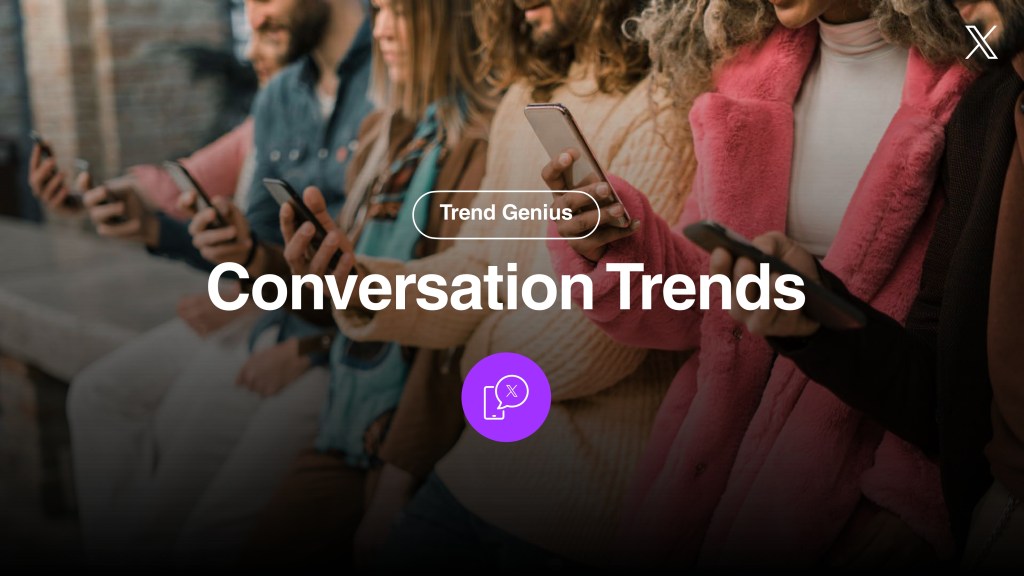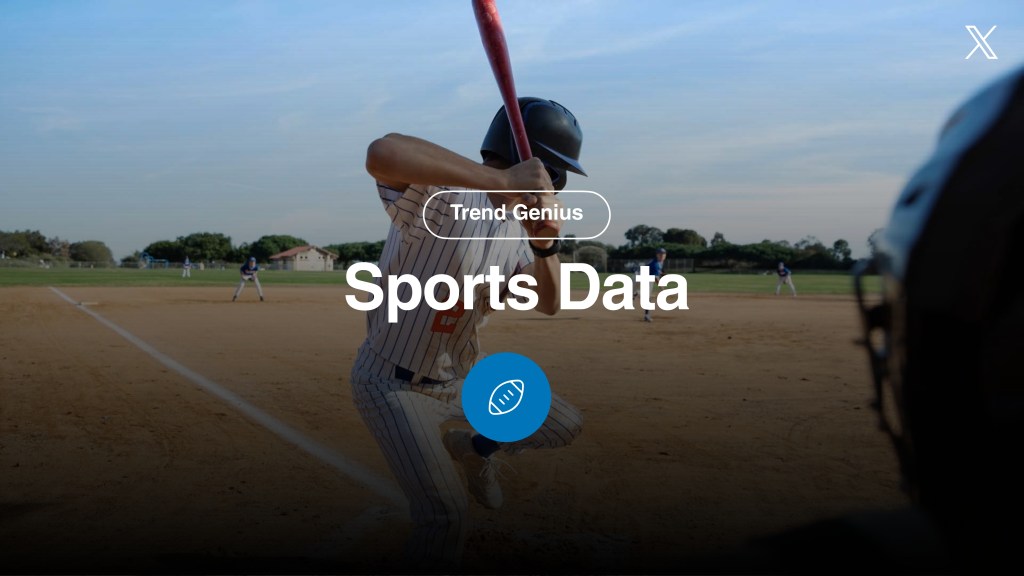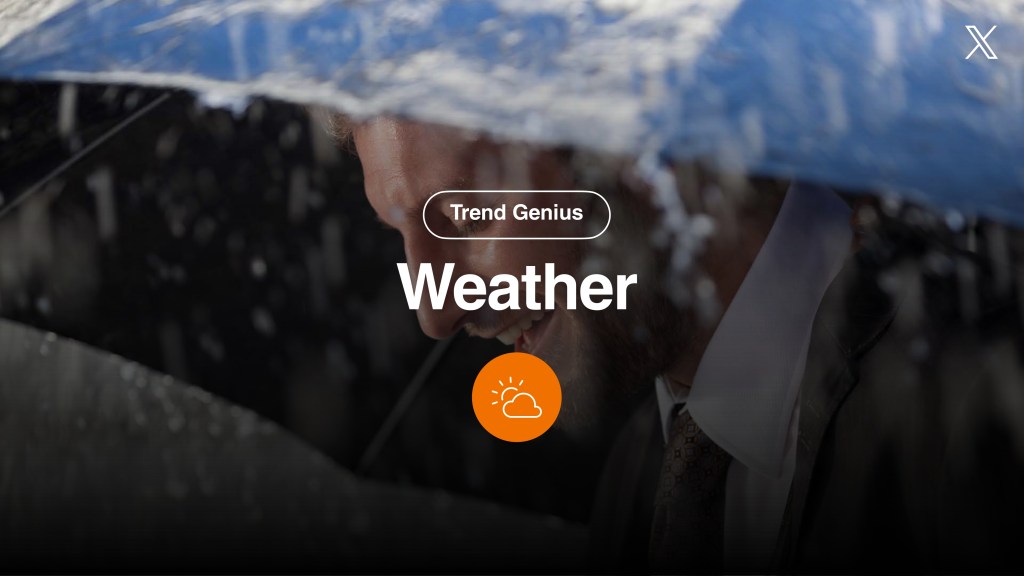Pitch deck: How X’s ‘real-time’ factor has become the star of its latest pitch to advertisers

This article is part of an ongoing series for Digiday+ members to gain access to how platforms and brands are pitching advertisers. More from the series →
X’s pitch to advertisers has been a wild ride since Elon Musk took the reins, but their latest pitch is starting to sound like déjà vu.
According to a recent pitch deck it has shared with advertisers, the social network is going back to its roots, pushing real-time conversations — and more importantly advertisers’ ability to target the ones they deem suitable.
Though real-time engagement has always been part of the pitch, it hasn’t always been the star of the show, especially with the platform’s recent focus on everything from creators to video. But now, according to the latest pitch deck shared with Digiday, it’s taking center stage again.
The 35-page document focuses on Trend Genius, which advertisers had a glimpse of during the Olympics. X developed the tool in partnership with Genius Sports to help marketers target what they deem to be suitable conversations for their brands to be associated with.
In retrospect, the launch seems like a warm-up for something much bigger.
How does it work?
Trend Genius uses AI and real-time data to optimize ad placements, showcasing X’s commitment to sophisticated targeting and analytics tools — similar to then-Twitter, pre-Musk offerings. Or as the deck states, “Trend Genius turns the ad on-off based on conversation velocity.”
The deck gives marketers a step-by-step guide on using the tool. First, they’ll consult with X reps about which conversations they want their ads to appear in and what kind of creative they envision. Once those conversations gain traction, Trend Genius activates the ads when the buzz hits a set threshold and pulls them when the hype fades.
Josh Rosen, president of Hotspex Media said he thinks Trend Genius is definitely trying to leverage the old Twitter days, before it was X, and when the platform was known for real-time content, to attract advertisers.
“Advertisers are constantly searching for the optimal time to run their creative, and displaying ads during trending topics as people are voraciously chatting back and forth in real-time. Can’t say it doesn’t make sense,” Rosen said, though he did caveat that his team hasn’t used the tool yet.
The product also promises to keep ads in brand-safe zones by aligning them with specific topics chosen by advertisers. This aims to tackle the brand safety issues that have lingered since Musk’s takeover, despite X’s efforts to revamp its reputation by partnering with Integral Ad Science and DoubleVerify and regaining its brand safety certification from TAG in June.
Sam Budd, founder and CEO of Buddy Media said that while his team hasn’t used Trend Genius yet, it does increase the likelihood of them using X in the future.
“With concerns about controversial topics on X under Musk, being able to handpick conversations is reassuring,” he said. “Plus it also promises cost-effectiveness by targeting ads during peak trends and reducing spend when interest fades.”
In many ways, the Olympics served as a test run. X believes it was closely tied to the event thanks to the buzz on its platform. As of Aug. 7, the global sporting extravaganza racked up over 73.1 billion impressions, more than 7.9 billion video views and 171 million posts, according to an X newsletter Digiday reviewed.
“The technology works in every scenario, because it’s us [Genius Sports/X] looking at the live volume of posts, indexing them and understanding the contextuality of those posts in order to trigger the acceleration of the campaign,” said Josh Linforth, CRO of Genius Sports. “You [advertisers] can use it [Trend Genius], in loads of different use cases outside of the sports world.”
One of those use cases could potentially be the U.S. Presidential race.
“Theoretically, you [advertisers] could also use it in elections and campaigns, because you could look at local trending issues and use that to deliver a campaign message from the local representative,” said Linforth. He added that his team had been in conversation with X over the past year, about tooling and technologies to capitalize on election campaign spend. However, when Digiday tried to confirm if this was part of X’s plan for the upcoming Presidential election, the platform didn’t say much.
Nonetheless, X’s Trend Genius deck encourages advertisers to combine Trend Genius with keyword targeting to ensure “your ad can be served in a number of locations during the trend.” For example, the ads can appear in search results, when users search for related keywords, on the timeline, which targets users who recently posted on X using keywords related to the trend, or within replies, again targeting replies using keywords related to the trend.
Click below to view the full deck:
More in Marketing

Zero-click search is changing how small brands show up online — and spend
To appease the AI powers that be, brands are prioritizing things like blogs, brand content and landing pages.

More creators, less money: Creator economy expansion leaves mid-tier creators behind
As brands get pickier and budgets tighten, mid-tier creators are finding fewer deals in the booming influencer economy.

‘Still not a top tier ad platform’: Advertisers on Linda Yaccarino’s departure as CEO of X
Linda Yaccarino — the CEO who was never really in charge.

